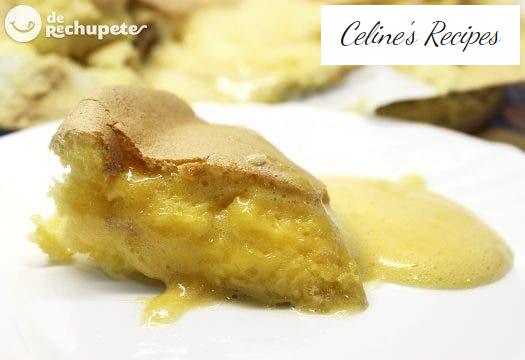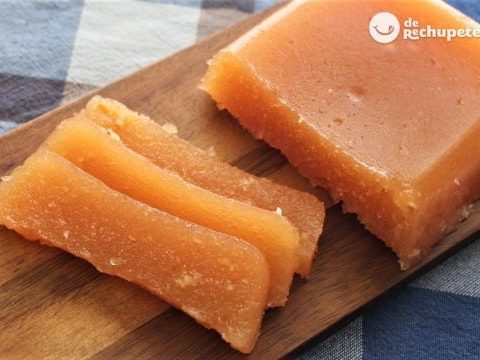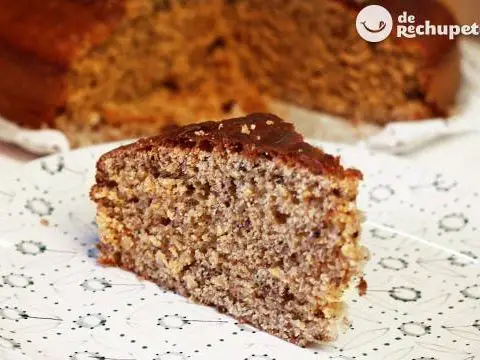
Info.
- Easy
- 25 minutes
- For 8 people
- € 0.3 / person
- 320kcal per 100g.
How to prepare a Portuguese Pão de Ló .
Portugal is an endless source of recipes for traditional and private desserts .
I consider myself a lover of its gastronomy, and you can check it out perfectly on the blog, where you will find a good number of recipes from the neighboring country. I suppose that my condition of Galician favors this feeling.
The recipe that today, Portuguese Pão de Ló, is a super spongy moist sponge cake, where the main ingredient is eggs. We could say that it is a Convent sweet.
Outwardly it looks like a typical sponge cake, toasty in color, but then its interior is moist and fluffy. When cut, it is like a chocolate coulant , with the egg spilling from inside the cake.
What is mainly used are the egg yolks, but do not throw the whites, there is a second life for them.
You can prepare other sweets that are prepared with the whites, such as Bica de Laza , some cocadas , some financiers, Italian meringue or also for tortillas, if we go to salty.
Preparation of the Portuguese Pão de Ló
- It will take us a short time to prepare it, so we take the opportunity to put the oven to preheat. At 200º C, in the “heat up / down” function.
- We separate the yolks from the whites (8 in total), and reserve these for some other recipe. In a large bowl, add the yolks, the two whole eggs and the sugar.
- We beat well, with the help of electric rods or if we have skill, with manual rods.
- Now add the sifted flour (with the help of a strainer or similar) and a pinch of salt. Mix with wrapping movements, with a spatula, so that the cream does not come down.
- We line the mold with beard paper (or oven paper if you can’t find it) and pour the cream into the mold. Bake for 12-15 minutes, keeping an eye on the cake so it doesn’t burn too much.
- It may seem little time but the result we want is that it is done / golden on the outside, and juicy / wet on the inside.
- Let cool a few minutes and serve. You will see how the inside of the cake spreads, to the point that it could be eaten with a spoon.
I hope you enjoy this traditional Portuguese sweet and “Bom proveito” yummy.
In yummy recipes we are in love with Portugal and its cuisine.
The success of Portuguese cuisine is seen in the visits that come to the blog of recipes such as golden cod , Belem cakes or Bacalhau à Gomes de Sá … although we will publish more and more, passion for our neighboring country.
You can see all the step by step photos of the Portuguese Pão de Ló recipe in this album, do not miss any detail and it will be perfect for you.
Tips for a delicious Pão de Ló
- If you let it rest a little longer, after 10 minutes, it will be fluffy but with a more tender sponge appearance. It would not be the authentic Portuguese Pão de Ló.
- Another good option is to do it in individual molds (metal or paper), although in this case it will be necessary to reduce the baking time. 6/7 minutes would be enough.
Origin and history of the Portuguese Pão de Ló
- The origin of this recipe takes us until the middle of the 18th century. Genoese cook Giobatta Carbona is said to be. He put the name ” Pan di Spagna ” (Bread from Spain) in Italy.
- The historian Julio Carreira contributes in a comment that the Portuguese Jesuit missionaries in the city of Nagashaqui introduced it to Japan in the 16th century. There he took the name of ” Pao de Castilla “.
- In Portugal it is a very widespread sponge cake, which can be found in pastry shops throughout the country. There are some areas where it is more typical or known, such as Ovar, Alfeizerão, Margaride or Arouca. It is possible to find it with a drier interior, but it would no longer be like the original recipe of Pão de Ló .
- Today’s recipe is specifically from ” Pão de Ló de Ovar “, a town located in the North of Portugal, about 40 km below Porto. In this town it is the star product. You can find it in most patisseries and it is a must buy if we visit it.
- Precisely in Ovar, the Pão de Ló began to be elaborated in the Convents and monk communities. His thing is to accompany it with a port wine, a good coffee and then enjoy after dinner.






